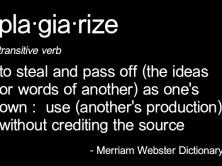
(Credit: jfcherry via Flickr)
Gary Schwitzer, who reviews health journalism reporting daily for his site Health News Review, offered five tips for evaluating the quality of health news stories in a recent interview with the Minnesota Post.
- “If it sounds too good to be true, it almost always is.
- “If you ever see a healthcare claim that only discusses the potential benefits, proceed with caution. If harms aren’t discussed, it’s an incomplete discussion.
- “If costs aren’t discussed, just learn from our experience: 70 percent of the 2,000 stories that we’ve looked at didn’t adequately discuss costs. At some point journalists have to take some degree of the responsibility for the fact that we spend a greater percentage of the GDP on healthcare than any other country on the face of the Earth — and we don’t have the outcomes to show for it.
- “If you ever hear somebody talk about a simple screening test, run for the hills because there is no such thing as a simple screening test. Our decisions to seek screening should be among the most complex decisions that we face because, depending on whatever happens as a result of that test, you may kick off a whole cascade of issues that you probably are uninformed about. You need to have a balanced consideration of them — and a balanced discussion with your physician about harms and benefits.
- “In health care, more is not always better. Newer is not always better. Less can be more.”
Health News Review identifies itself as “your health news watchdog.” Its website explains it wants “to improve the public dialogue about health care by helping consumers critically analyze claims about health care interventions and by promoting the principles of shared decision-making reinforced by accurate, balanced and complete information about the tradeoffs involved in health care decisions.”
Further, the site “evaluates health care journalism, advertising, marketing, public relations and other messages that may influence consumers and provides criteria that consumers can use to evaluate these messages themselves.”
That criteria is explained on Health News Review’s site here. Health News Review has “two of three different reviewers evaluate each story” and give it a grade.
Schwitzer, who has been a medical news reporter and health journalism and media ethics professor, added that he encounters some of the same problems in health journalism reporting that arose in the infamous discredited Rolling Stone story “A Rape on Campus.”
“We have our own version of the Rolling Stone rape story every day in healthcare journalism,” Schwitzer told the Minnesota Post. Problems he sees include fact checking, reporting, lack of attribution, sourcing and confirmation bias.
Specifically, Schwitzer said “Nearly 70 percent of stories fail to adequately quantify benefits, fail to adequately quantify harms and fail to adequately discuss costs.” The reality of those failings means “we are making things look terrific, risk-free and without a price tag” and a misinformed public.
Schwitzer’s site is now examining press releases for exaggerated information, pointing out that they often lead to news stories. “News releases can mislead overworked and underpaid healthcare journalists who have to meet a quota,” Schwitzer said.
Read the full interview with Schwitzer at the Minnesota Post.






